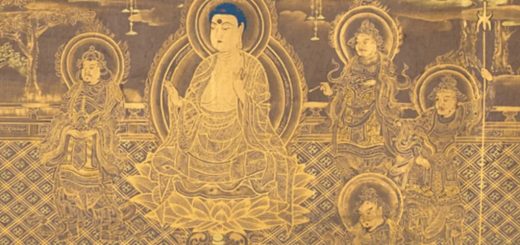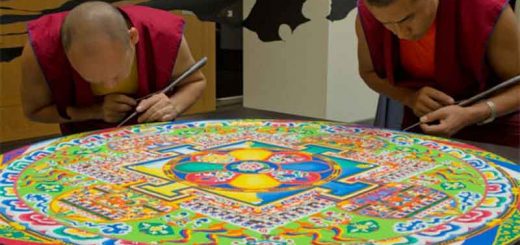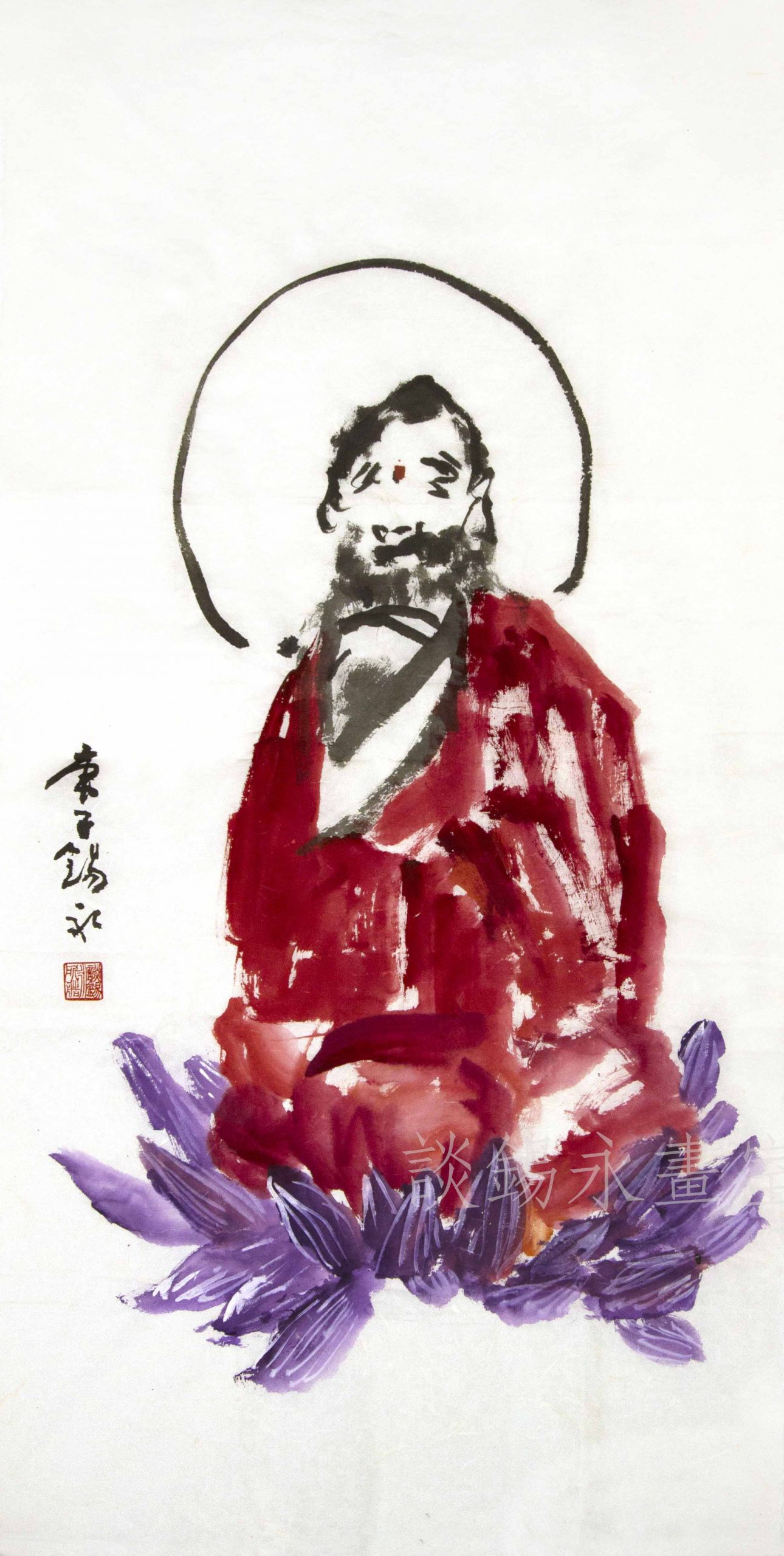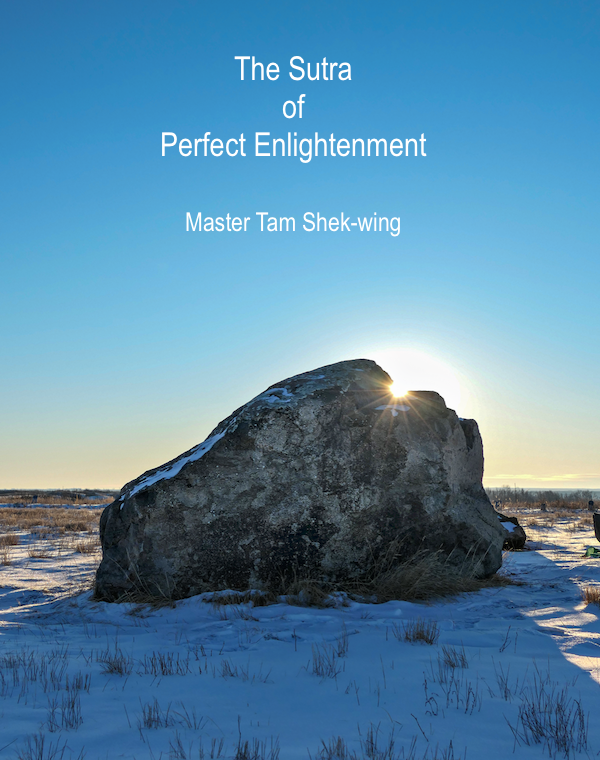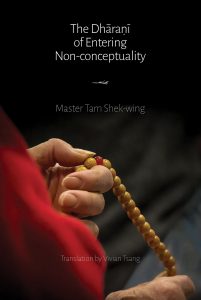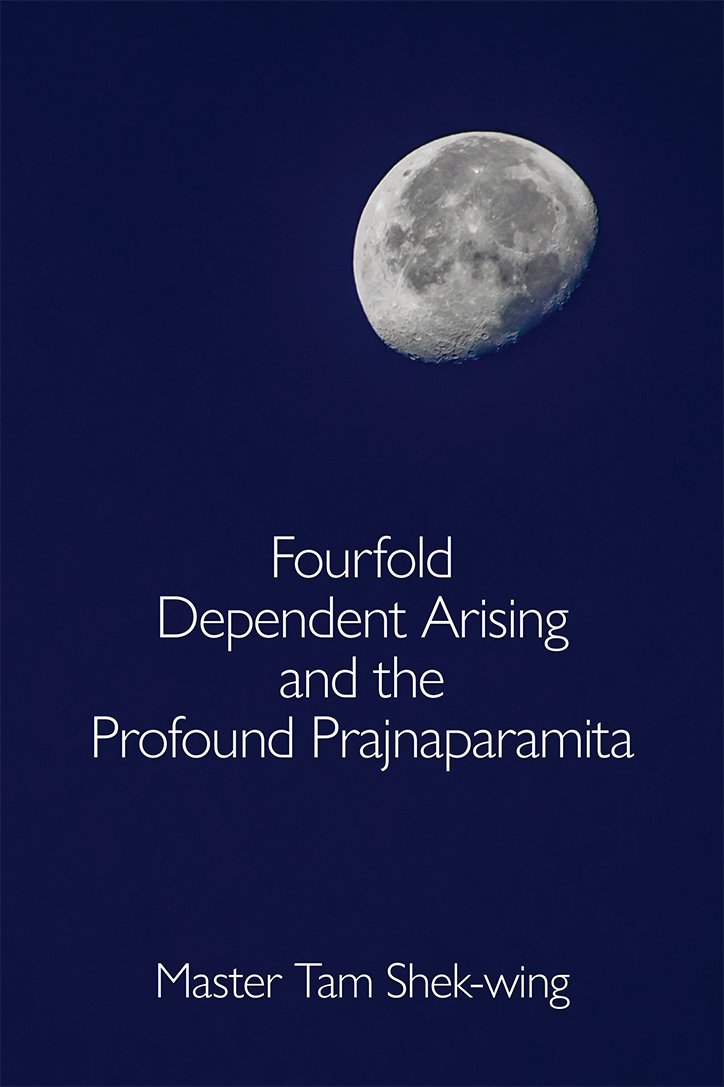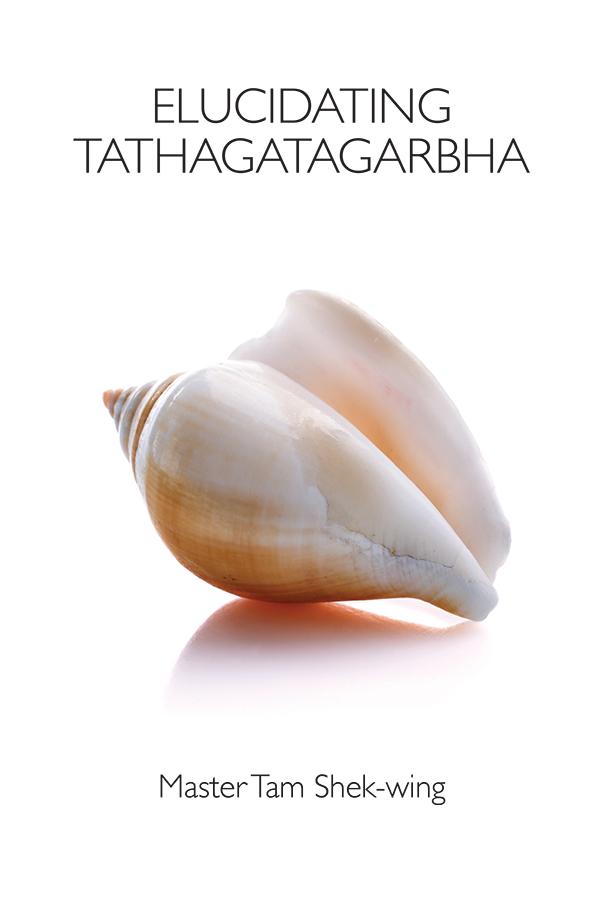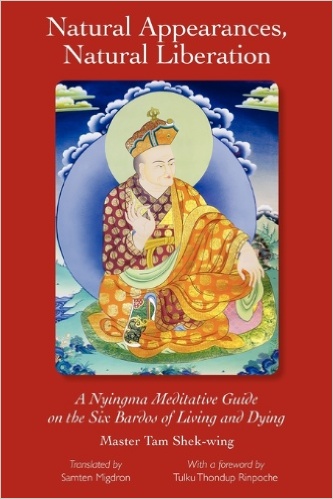Perfect Enlightenment 24: Buddha Teaches 25 Expedient Practices, Part 1
Show scripture (Chinese). 爾時,世尊告辯音菩薩言:「善哉!善哉!善男子!汝等乃能為諸大眾及末世眾生,問於如來,如是修習。汝今諦聽!當為汝說。」時,辯音菩薩奉教歡喜,及諸大眾默然而聽。 「善男子!一切如來圓覺清淨,本無修習及修習者,一切菩薩及末世眾生依於未覺幻力修習,爾時便有二十五種清淨定輪: Show scripture (English). Then the World Honored One, addressing the bodhisattva Voice of Discernment, said: “Excellent, excellent! Good son; you have questioned well for the bodhisattvas and sentient beings of the degenerate age about the various practices of the Tathāgata. Now listen well, and I shall explain for you.” The bodhisattva Voice of Discernment received this teaching with reverence and joy. All those in the great crowd became silent and listened. “Good sons, the Perfect Enlightenment of all tathāgatas is originally pure, it has neither practice nor practitioner. When they practice, all bodhisattvas and sentient beings of the degenerate age depend upon the power of unenlightened illusion. At that time (the time of practice dependent upon illusion) there are twenty-five kinds of pure samādhi maṇḍala.” To answer Voice of Discernment, Buddha said that the three expedient methods can turn into 25 applications. The scripture says, “[T]he Perfect Enlightenment of all tathāgatas is originally pure, it has neither practice nor practitioner. When they practice, all bodhisattvas and sentient beings of the degenerate age depend upon the power of unenlightened illusion. At that time (the time of practice dependent upon illusion) there are twenty-five kinds of pure meditation applications.” This portion of the text is very important. While Buddha said there were 25 practices, but their essence is illusory. In the realm of illusion, one meditates on the illusion so as to eliminate the illusion. This is the secret meaning of Buddha. The scripture says, the expedient practices all “depend upon the power of unenlightened illusion,” which is the mental state of a practitioner. This mental state can further be classified into two: 1. Before enlightenment, which goes without saying; 2. The power of illusion, which is the force from the practice of meditating on the illusion in the realm of illusion. Because it is a meditation on the illusion in the realm of illusion, the expedient practices are themselves illusory. This is the framework of the practice. Readers should take this to heart in their understanding. Below is a listing of the 25 expedient practices. They will be discussed after. śamatha only Exclusively grasp ultimate quiescence, and through the power of quiescence permanently sever affliction absolutely and perfectly, and directly enter nirvana without rising from their seats. samāpatti only Exclusively contemplate all-as-illusion, and by means of Buddha-power transform the world and carry out various activities, thoroughly putting into operation all the marvelous pure bodhisattva practices. In all continuous concentrations they do not fail in cessation of thought and quiescent wisdom. dhyāna only Exclusively extinguish all illusions, and without activity in the world resolutely sever affliction. Affliction completely severed, they directly actualize the marks of reality. śamatha first and samāpatti next First attain perfect quiescence, and through the mind of quiescent wisdom shed light on all illusions and directly within these illusions arise the bodhisattva practices. śamatha first and dhyāna next Actualize the perfectly quiescent nature through quiescent wisdom, and then directly sever affliction and permanently escape from birth and death. śamatha first, samāpatti next, and dhyāna last Use cessation-quiescent wisdom to re-manifest illusion-power and establish all kinds of transformations to save sentient beings. Subsequently they sever affliction and enter cessation-extinction. śamatha first, dhyāna next and samāpatti last Use the power of perfect quiescence to sever all affliction. They then arise the pure, marvelous practices of the bodhisattvas and save all sentient beings. śamatha first and subsequent simultaneous samāpatti and dhyāna Use the mind empowered by perfect quiescence to sever affliction and then save sentient beings and establish objective realms. simultaneous śamatha and samāpatti, followed by the practice of dhyāna Use the power of perfect quiescence to aid in the initiation of transformations, then subsequently sever afflictions simultaneous śamatha and dhyāna, who subsequently practice samāpatti Use perfect quiescence to aid in extinction, and subsequently carry out activities to transform the world. samāpatti first and śamatha next Use transformation power to make various kinds of accordance, and thereby attain perfect quiescence. samāpatti first and dhyāna next Use transformation power to create various realms, and thereby attain cessation-extinction. samāpatti first, śamatha next and dhyāna last Use transformation power to carry out Buddha-works. Then, abiding in cessation-quiescence, they sever affliction. samāpatti first, dhyāna next and śamatha last Use transformation power’s unhindered function to sever affliction, and are therefore able to abide in perfect quiescence. samāpatti first, followed by simultaneous śamatha and dhyāna Use transformation power for the activity of expedient teaching and then practice within both perfect quiescence and extinction together. simultaneous samāpatti and śamatha, followed by dhyāna Use the various arising functions of transformation power to aid in the attainment of perfect quiescence and subsequently sever affliction. simultaneous samāpatti and dhyāna followed by śamatha Use transformation power to aid in extinction, and subsequently abide in pure uncreated quiescence of thought. dhyāna first and śamatha next Use the power of extinction to arise perfect quiescence and abide in purity. dhyāna first and samāpatti next Use the power of extinction, yet enter activity, and this quiescent function is practiced within all realms. dhyāna first, śamatha next and samāpatti last Use the various self natures of extinction power, and abiding in mental quiescence, produce transformations. dhyāna first, samāpatti next and śamatha last Use the effortless self-nature of extinction power to engage in activity, then purify the objective realm and return to quiescence. dhyāna first, followed by simultaneous śamatha and samāpatti Use the various purity of extinction power, then, abiding in mental equipoise, they produce transformations. simultaneous dhyāna and śamatha, followed by samāpatti Use extinction power to aid in the attainment of quiescence, and then give rise to transformations. simultaneous practice of dhyāna and samāpatti, followed by śamatha Use extinction power to aid in transformation, producing perfect quiescence which purifies and illuminates the world. Practice of the three kinds of accordance with the purity of the self-nature Using the wisdom of Perfect Enlightenment, harmoniously combine all of these, and in connection with all natures and characteristics, never separate from the enlightened nature. All 25 practices abide by one important principle, it is as the scripture says, “the Perfect Enlightenment of all tathāgatas is originally pure, it has neither practice nor practitioner.” If one becomes attached to the practice itself, it becomes the obstruction of knowledge (noumena); if one becomes attached to the practitioner, there is also the obstruction of affliction. The former establishes the phenomenal self, the latter the ego self. The two create major obstacles to the practice, for within the realm of illusions neither self exists. Since it is illusory, one cannot speak of selves.Chinese:
English:
Commentary:
Practices
Fruition, Observation in Action
1
單修奢摩他
唯取極靜,由靜力故永斷煩惱究竟成就,不起于座便入涅槃。
2
單修三摩鉢提
唯觀如幻,以佛力故變化世界種種作用,備行菩薩清淨妙行,於陀羅尼不失寂念及諸靜慧。
3
單修禪那
唯滅諸幻,不取作用獨斷煩惱,煩惱斷盡便證實相。
4
先修奢摩他,後修三摩鉢提
先取至靜,以靜慧心照諸幻者,便於是中起菩薩行。
5
先修奢摩他,後修禪那
以靜慧故,證至靜性,便斷煩惱永出生死。
6
先修奢摩他,中修三摩鉢提,後修禪那
以寂靜慧,復現幻力種種變化度諸眾生,後斷煩惱而入寂滅。
7
先修奢摩他,中修禪那,後修三摩鉢提
以至靜力,斷煩惱已,後起菩薩清淨妙行度諸眾生。
8
先修奢摩他,齊修三摩鉢提、禪那
以至靜力,心斷煩惱,復度眾生建立世界。
9
齊修奢摩他、三摩鉢提,後修禪那
以至靜力,資發變化,後斷煩惱。
10
齊修奢摩他、禪那,後修三摩鉢提
以至靜力,用資寂滅,後起作用變化境界。
11
先修三摩鉢提,後修奢摩他
以變化力,種種隨順,而取至靜。
12
先修三摩鉢提,後修禪那
以變化力,種種境界,而取寂滅。
13
先修三摩鉢提,中修奢摩他,後修禪那
以變化力,而作佛事,安住寂靜,而斷煩惱。
14
先修三摩鉢提,中修禪那,後修奢摩他
以變化力,無礙作用,斷煩惱故,安住至靜。
15
先修三摩鉢提,齊修奢摩他、禪那
以變化力,方便作用,至靜、寂滅二俱隨順。
16
齊修三摩鉢提、奢摩他,後修禪那
以變化力,種種起用,資於至靜,後斷煩惱。
17
齊修三摩鉢提、禪那,後修奢摩他
以變化力,資於寂滅,後住清淨,無作靜慮。
18
先修禪那,後修奢摩他
以寂滅力而起至靜,住於清淨。
19
先修禪那,後修三摩鉢提
以寂滅力而起作用,於一切境,寂用隨順。
20
先修禪那,中修奢摩他,後修三摩鉢提
以寂滅力,種種自性,安於靜慮而起變化。
21
先修禪那,中修三摩鉢提,後修奢摩他
以寂滅力,無作自性,起於作用,清淨境界,歸於靜慮。
22
先修禪那,齊修奢摩他、三摩鉢提
以寂滅力,種種清淨而住靜慮,起於變化。
23
齊修禪那、奢摩他,後修三摩鉢提
以寂滅力,資於至靜而起變化。
24
齊修禪那、三摩鉢提,後修奢摩他
以寂滅力資於變化,而起至靜,清明境慧。
25
圓修三種自性清淨隨順
以圓覺慧圓合一切,於諸性相,無離覺性。
